Mavs Training Camp Preview: 6 Major Storylines to Follow
DALLAS — After a 38-44 finish to their previous campaign, the Dallas Mavericks seek to achieve a major bounce-back in the 2023-24 season. Due to having international preseason games in Abu Dhabi and Madrid, the Mavs are one of two teams eligible to begin training camp early.
Before the Mavs complete Day 1 of training camp on Wednesday, DallasBasketball.com takes a close look at some important storylines to monitor.
Continued Chemistry Building With Luka Doncic & Kyrie Irving — With Kyrie Irving re-signing on a three-year, $120 million contract in free agency, the Mavs will have a superstar running mate to pair with Luka Doncic. The team had to adjust to a backcourt void created by Jalen Brunson's departure entering the last training camp, which ultimately led to the midseason trade with the Brooklyn Nets to acquire Irving. The result was Dorian Finney-Smith, Spencer Dinwiddie, a 2029 first-round pick, and multiple second-round picks being moved.
A lot of attention was placed on the Mavs going 5-11 in the 16 games Doncic and Irving shared the floor after the midseason trade last season. With a broken team defense, a need to establish familiarity in on-court situations, and ongoing injury concerns for both stars, it proved challenging for Dallas to succeed. There is optimism that offseason roster changes could fuel greater results this time, though.
The results the Mavs achieved with Doncic and Irving together were impressive when looking at the minutes they played, as opposed to the win-loss figures. In 444 minutes, the team had a 119.2 offensive rating and a 4.2 net rating. The team was weighed down by a 115.0 defensive rating and a struggle to achieve victories in clutch games.
The forefront of improvement must be achieved on defense, regardless of whether Doncic or Irving are on the floor. The health of Doncic plays a factor in this, given he tends to be more active when there is less of a physical burden he faces. One method to achieve alleviation of that burden would be to further install layers to the half-court that feature Doncic beginning plays off-ball.
During the FIBA World Cup, Slovenia had various injuries on the wing that required Doncic to play more alongside multiple guards. With teams applying full-court pressure, a common counter for the offense was to have Doncic begin plays off-ball to conserve energy. In doing so, this enabled him to play within various off-ball actions out of the corner, like double-wide pindowns or Zoom action handoffs.
There are further advantages that are presented by an offense that weaponizes Doncic as an off-ball presence. While occasional both with the Mavs and Slovenia, having Doncic be a ball screener tends to put the defense into a real bind since the outcome often involves the defense allowing the ball handler to attack downhill due to not wanting to switch or hedge, or Doncic can gain an advantage against a switch or out of position defense to attack in the middle of the floor. Slovenia took it a step further by having Doncic be the back screener in Spain pick-and-roll during their World Cup finale against Italy.
With a downhill threat like Doncic, who thrives at using pace, footwork, and touch on drives, giving him plays to turn the corner without having to initiate and break down the defense can be a great way to give the defense different looks. If a switch does occur, Doncic is an elite isolation threat that can make the defense pay.
Beyond the focus on reducing physical fatigue, it's very difficult for a defense to double-team a player who is involved in an off-ball screening action. Last season, Doncic benefited from the expanded use of post-ups to have another method of attacking the defense from different spots on the floor, making it difficult to succeed when sending double teams. Some actions put both playing off-ball and gaining post touches together like cross screens, as Doncic received within Slovenia's offense. Could further deployment of Doncic in off-ball actions be the next step?
Irving often expressed his desire to fit in with what the Mavs already had going after the trade instead of trying to have the team change around him, given the nature of joining the team in the stretch run of the season. With some established familiarity, training camp, and a full season, Dallas has more options to get creative with how its half-court offense operates using Doncic and Irving.
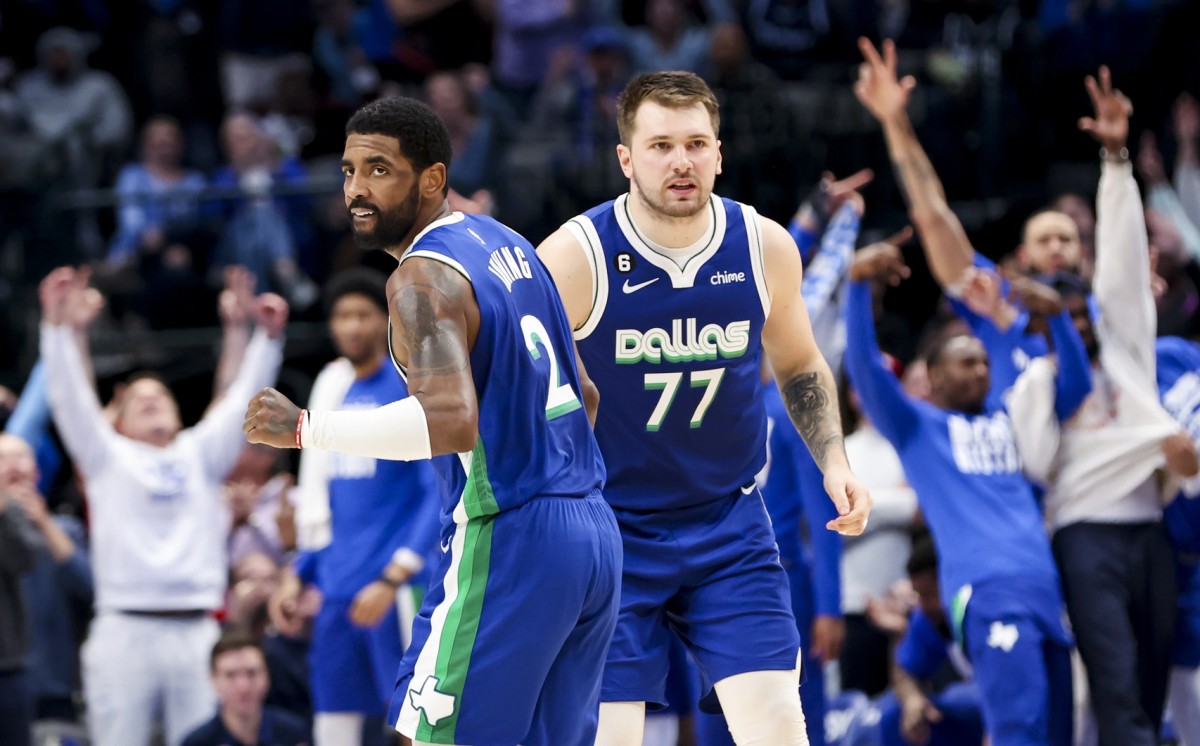
Steps Taken to Improve Defense & Rebounding — The priorities for roster offseason improvement featured addressing defense and rebounding — two categories the Mavs were among the league's worst. To put it into perspective, Dallas finished last season with just a 116.1 defensive rating (25th) and a 47.1% total rebounding percentage (30th). Both figures even worsened during the team's post-All-Star break performance.
As a result of not being able to put teams away or to control the game on both ends, the Mavs played more "clutch" games (55) than any other team in the NBA last season. The team produced just a 26-29 record in these outings, which placed them in a tie with the Utah Jazz for the most clutch losses with 29.
The team used the NBA Draft to bring in rookies Dereck Lively II and Olivier-Maxence Prosper, who have "taken jumps" in recent weeks, creating a sense of momentum for immediate roles with the team. Both players are considered instrumental long-term pieces for the Mavs, particularly defensively.
A prominent deficiency the Mavs faced with the previous roster was a lack of positional size, which was exacerbated by having to include Finney-Smith in the midseason trade. The two rookies help to address this issue, but the team did acquire Grant Williams in a three-team sign-and-trade to add a bigger-framed option for the starting lineup at the four spot.
Outside of Doncic, Irving, and Williams, the starting lineup sounds open, based on recent comments from Mavs coach Jason Kidd. An ideal personnel set would feature a defensive anchor at the five and a versatile wing defender at the three. Neither Dwight Powell nor Richaun Holmes fit that mold as an undersized center, but they are experienced options, while Lively is likely the long-term option. Meanwhile, Josh Green or Prosper could be helpful options on the wing.
It's a stretch to consider both Lively and Prosper as probable short-term starters, but Kidd did mention that both players will prove instrumental in the team's fabric this season. He went as far as to say that one of them could work their way into the starting lineup. Ultimately, both players could have a significant influence on the team's immediate potential defensively due to the physical tools they possess that others on the roster lack. How soon will they be ready?
"They've done everything we've asked them to do," Kidd said. "Each week they get better. So we're excited. I look for those rookies to play a lot this season. They're going to be a part of our fabric. There could be a chance of one of them starting. So, we'll see."
The Mavs will have other versatile, complementary options to deploy in various lineups that could help to provide a boost defensively. Firstly, Maxi Kleber should benefit from having a full offseason to work on his body after making a quick midseason return from a torn hamstring last season. The team also added Derrick Jones Jr., who brings plenty of athleticism and can play the four or the five. Dante Exum, who added size to his frame since last playing in the NBA, can guard multiple positions on the perimeter, too. The roles that each player receives will be something to monitor as the rotation is established.
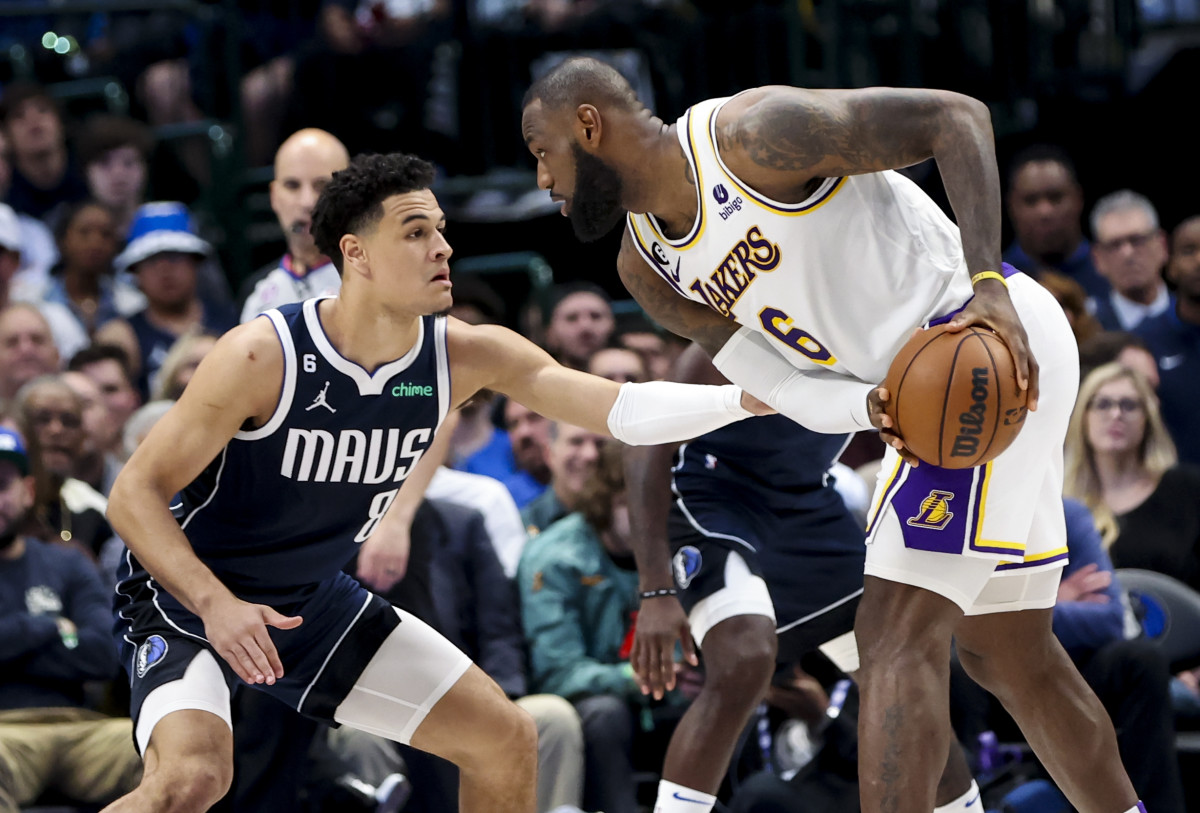
Starting Center Role is 'Up for Grabs' — The center position was a common weakness for the Mavs last season. Entering last year's training camp, there was already an idea that JaVale McGee would be the opening night starter. Christian Wood was acquired using a first-round pick, allowing him to fill an important role from the jump. The intent was for a reigning Western Conference Finals team to upgrade at the five spot after being identified as a need to address to take the next step.
The plan the Mavs had for the center position did not take long to unravel. After poor play to begin the season, McGee went from being the starter to frequently being a DNP-CD. Dwight Powell began the season receiving out of the rotation but went on to start in 64 of 76 appearances. Dallas relied on Maxi Kleber to spend time at the five spot in small-ball lineups, too.
It became common for the Mavs to throw out no shortage of different looks at the center position, sometimes putting out three or even four players within the same game. Powell and Kleber remain from last year's roster, while Holmes is the only other veteran option. In an ideal scenario, none of these players would be relied on as a defensive anchor against starting talent.
Again, the long-term vision for the center position involves Lively emerging as the full-time starter. At 7-foot-1 with a 7-foot-7 wingspan, he is the only option on the roster with the ideal intangibles of a starting center. That's likely why Kidd recently described the starting center job as "up for grabs" and stated that Lively will play with the starters in camp for further evaluation.
"It's up for grabs," Kidd told 97.1 The Freak about the starting center job. "I will start Lively with the big group and see how that goes."
There will naturally be ups and downs for any rookie, particularly one who is relied on to fill a major role. Lively having such a long wingspan and being agile enough to have versatility within various schemes, particularly in the team's Channel 1 ball screen coverage, which involves the big playing close to the level of the screen and being able to account for the roller.
The goal is to take away space for the ball handler to get into a quick pull-up and to prevent there from being a gap to attack after initially using the ball screen. As long as the roller doesn't get behind, the idea is to prevent a clean finish from being available for the big and to deter the guard from attacking the rim altogether. Ideally, with proper execution, the defense will minimize the need for the rest of the unit to leave perimeter shooters to assist with paint protection.
To execute such a scheme requires a big defender with the physical tools required. For example, if the roller does get behind the big defender due to the guard using a controlled pace and having the passing skill to make the exchange, it likely will come down to the quickness, size, and length of the big defender to be able to recover and to pressure the finish on the trail. A big like Powell or Holmes is likely to lack the tools necessary to achieve such a result, which lowers the capabilities of the scheme. However, this scheme also requires the big defender to make real-time judgment calls on Veer switches, which can be a complicated sequence when adjusting to the speed and capabilities of NBA talent.
Beyond being the right fit for a particular scheme, Lively must adjust to the nuances of the NBA game. All young bigs have to go through the process of realizing the requirements for details such as the timing needed to make a help rotation, the physical and skill capabilities of opposing matchups, and finding ways to establish consistency while handling their first 82-game season. For a team with immediate expectations, how quickly can Lively make these adjustments? How willing will the Mavs be to experience the growing pains with the goal of long-term payoff? Those will be questions to monitor throughout the season.
Holmes will be motivated to achieve a bounce-back season after being a non-factor in the Kings' rotation last season. While he has never been much of an impactful defender, he's registered seasons as a starter with impressive production. His career-best season featured him averaging 14.2 points, 8.3 rebounds, and 1.6 blocks in 2020-21. In a three-season span in which he started 136 of 150 performances with the Kings, Holmes averaged 12.5 points, 7.9 rebounds, and 1.3 blocks. With a soft touch in the paint and some ability to put the ball on the floor, how will he factor into the mix?
The option that tends to be utilized when needing to stabilize the situation has been Powell. He naturally remains a name to watch as a result, too, but it's evident the Mavs are aware of what they are getting from him as he enters his 10th season with the organization. His chemistry with Doncic in the pick-and-roll and understanding of the team's defensive schemes makes him a favorable example for Lively to observe closely early in his career, but also offers the Mavs an option to turn to when seeking experience and familiarity.
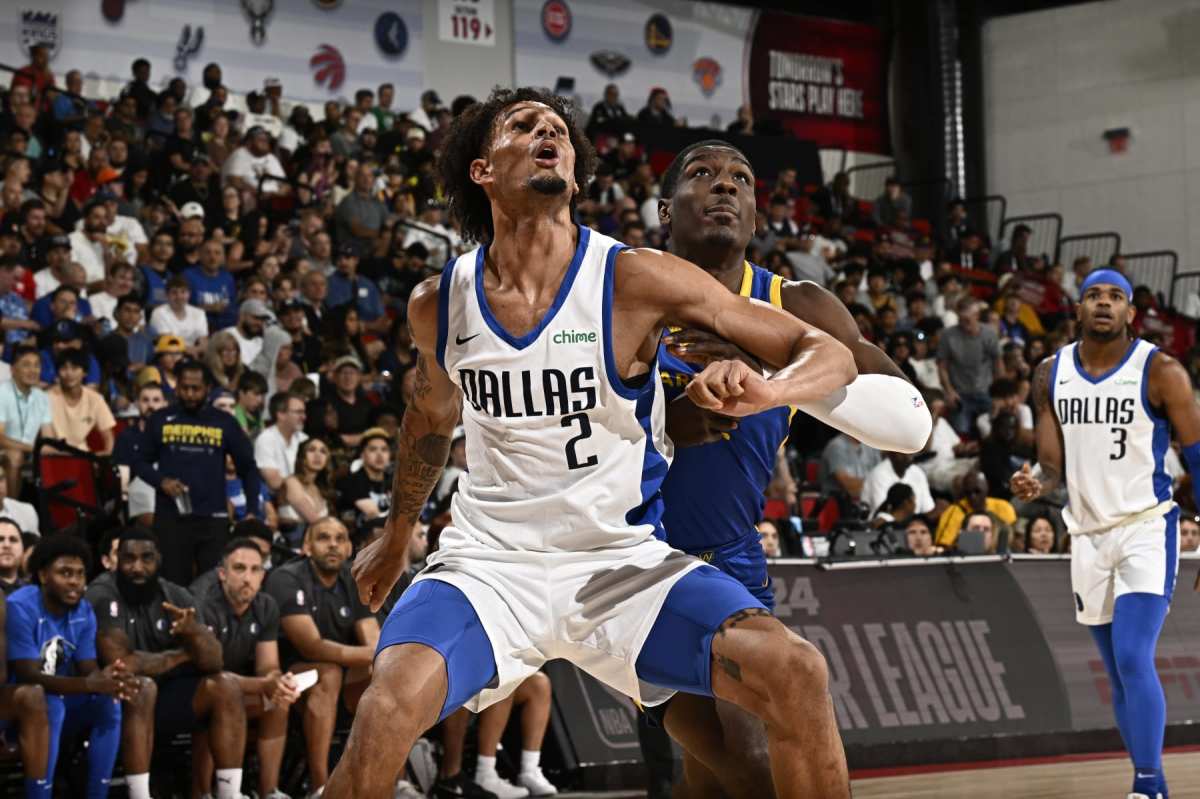
Wing Rotation Involving Olivier-Maxence Prosper, Josh Green & Tim Hardaway Jr. — The Mavs no longer have either starting wing from the team's Western Conference Finals run after trading Reggie Bullock in part of the sign-and-trade deal to acquire Williams. After moving Finney-Smith to the Nets midseason, Bullock filled started at the four but proved too small to handle that responsibility. His on-ball containment had regressed when attempting to guard quicker perimeter threats, too, creating a real problem for where he fits in elevating a defense.
The Mavs appear on track to bring Tim Hardaway Jr. off the bench, given Kidd's recent comment on 97.1 The Freak suggesting a goal for the team may be to have the veteran sharpshooter in contention for Sixth Man of the Year recognition by the end of the season. As a result, that would naturally leave either Green or Prosper as options to be involved as a starter on the wing next to Doncic and Irving.
Green is entering his fourth NBA season and is coming off a career year, averaging 9.1 points, 3.0 rebounds and 1.7 assists in 60 games. There are still plenty of elements to his game that remain a work in progress, such as his willingness to take contested shots, the expansion of his involvement as a creator in the half-court, and the need to take the next step as an on-ball defender, with the need to reduce fouling as a key part of that growth process.
Green told DallasBasketball.com in Japan that he desires to become a "bigger defensive presence" with the Mavs defensively this season. While competing with Australia at the FIBA World Cup, he filled the role of being the team's top on-ball defender, taking on the toughest perimeter assignment. Is he primed to take the next step defensively this season? Time will tell.
"I want to be able to be a bigger defensive presence next year for the Mavs," Green said. "I think this is a perfect time to try. I think I'll be in pretty good shape from picking up full court every game."
Dating back to the day of the NBA Draft and throughout the Summer League, the sentiment surrounding Prosper has remained that he appears capable of being a helpful player for the Mavs at some point in his rookie season. The momentum has intensified for both of the team's rookies in recent weeks, and now entering the beginning of training camp, raising the question of what Prosper's role could become.
At 6-foot-8 with a strong frame, Prosper already has the necessary physical tools to guard multiple positions at the NBA level. He also showed an impressive ability to attack off the catch and play off two feet in the paint to create advantages for himself on finishes in Las Vegas during Summer League. However, as is the case with Lively, Prosper will need to get acclimated to the NBA level, but at 21 as opposed to 19, perhaps he can hit the ground running quicker within his role.
The ability of Green and Prosper to provide impactful on-ball defense, knock down open shots, attack closeouts, and do the dirty work on both ends will be an important element to the Mavs' success. The team's ceiling could be intriguing if Dallas receives closer to the "best-case scenario" from even one of these players.
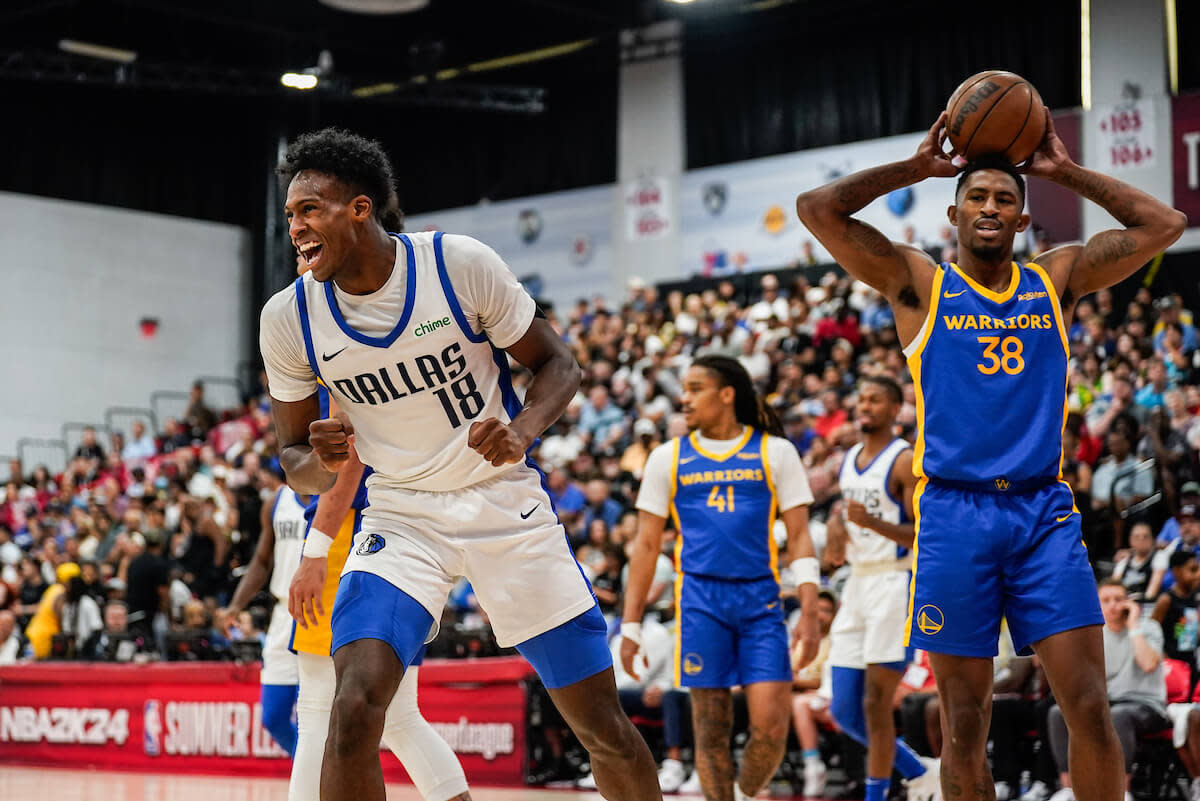
How Does Jaden Hardy Factor Into the Mix? — When the Mavs sustained injuries to Doncic and Irving last season, the first player that would step into a greater role in the offense was Jaden Hardy. Despite beginning the season with the Texas Legends, by the time March rolled around, Hardy could go from being a DNP-CD one night to becoming the first option if Doncic and Irving were sidelined. That may sound an exaggeration, but it's not upon further review.
From late February to early March, there was a five-game stretch in which Hardy did not log a single minute. After a combination of the team struggling and Doncic leaving the game early due to his lingering thigh injury, Hardy received 17 minutes in a road loss to the New Orleans Pelicans on March 8. The team was without Irving due to a foot injury, resulting in Hardy starting the next three games with both players sidelined. He took 63 field goal attempts within those three outings, averaging 24.0 points, 5.3 rebounds, and 3.3 assists. He immediately was reduced to playing under six minutes in a road win over the Los Angeles Lakers upon Irving's return.
The Mavs continue to focus on his passing reads, shot selection, and off-ball defensive focus, but with a stronger frame, there is optimism about his ability to continue to develop as a rim attacker and in handling guarding multiple positions. Regardless, given the volatile nature of Hardy's role and the tie his opportunities had to injuries as a rookie, what will his role be now that he has a season of NBA experience?
The foundation of the Mavs' playing time distribution tends to involve one of Doncic or Irving being on the court at all times. With Irving typically running the bench unit, it naturally places a smaller guard on the guard (even if he likes to joke that he's a four). Factor in Hardaway, filling a spot on the wing. Could the Mavs deploy a perimeter trio of Irving, Hardy, and Hardaway? How will Curry and Exum factor into the rotation?
If Hardy proves to require more time to develop, or a given situation calls for a more experienced option (Curry) or a versatile defender (Exum), the Mavs potentially have insulated the roster from the downside. Something to consider: Curry already has previous experience playing alongside both Doncic and Irving. Right now, just based on observations and not sources, it appears Hardy will need to not only compete with some talented options for minutes but would need to remain consistent to maintain his role.
Last season, Hardy ultimately found a real rhythm as a catch-and-shoot threat and an off-the-dribble perimeter shot creator. He displayed intriguing potential to attack closeouts on a roster that was quite limited in just about anything that required someone putting the ball on the floor outside of Doncic or Irving. It's never easy for a 21-year-old to compete with seasoned veterans, but Hardy's tantalizing displays of potential make him a player to keep an eye on in comparison even as he develops.
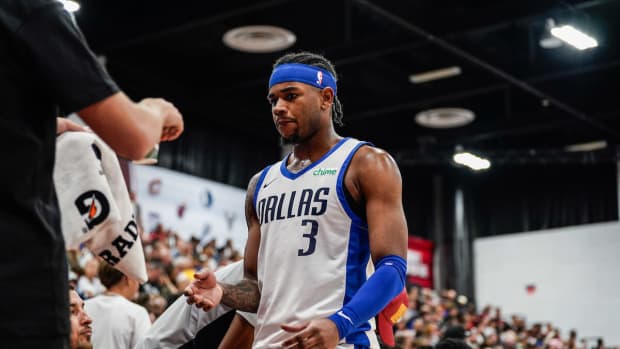
Latest on Luka Doncic's Thigh Injury? — The Mavs start with Doncic and tend to go as far as he can take them. A lot of attention is being placed on his injury status as he has yet to heal from a non-contact thigh injury he's dealt with since after the NBA All-Star break of last season. During the World Cup, DallasBasketball.com live from Manila on Doncic's comments regarding his injury being "not okay" after Slovenia's loss to Lithuania. It didn't take long for word to reach North America, and it has remained a storyline from that point on.
It will be important how the Mavs manage the injury, considering Doncic will always want to compete instead of sitting out unless absolutely necessary. Firstly, it remains to be seen how impacted Doncic remains by the injury, considering his performance after returning from missing five games in March and his excellent play with Slovenia at the World Cup. How he holds up throughout a long, 82-game season remains a factor that could strongly impact the Mavs' possible success.
There remains a focus on how the Mavs will manage Doncic throughout the season. Will he continue to sit him midseason during some back-to-backs? Will the half-court offense have further modifications to reduce his workload within games? Given how competitive the Western Conference once again portrays to be this season, everything will add up some time to focus on seeding in late March and early April.
